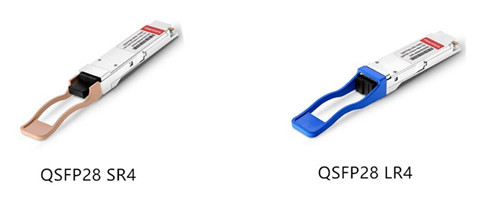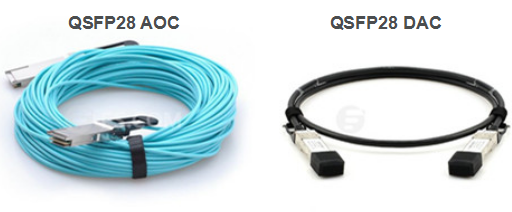Have you ever annoyed with your slow network speed that may cause a time delay? Under this circumstance, do you have an urge to smash your computer? In order to deal with this problem that many people may encounter, experts turn to upgrade the system for a higher data transmission rate. For instance, 40G, 100G and even 120G Ethernet network are developed and deployed for higher transmission speed and greater bandwidth, facing the challenge of increasing network needs. Do you have any interest in upgrading your system? This paper will introduce one of the most commonly used 100G transceiver and its cable assemblies for you to flawlessly and smoothly deploy 100G Ethernet network. Thereby, time delays will be avoided when you are working in a hurry next time.
As we know, installing standard transceivers and cables for 100G Ethernet migration is the most straightforward and efficient method to get a much higher transmission speed. As there are several kinds of transceivers and cables used for 100G Ethernet network, choosing the proper transceiver and its cable assemblies becomes an remarkable issue.
At present, there are several 100G transceivers that came into the market, developed for 100G Ethernet applications, such as, CFP, CFP2, CFP4, QSFP28. Compared with the 100G CFP family, QSFP28 has a great improvement in the panel density and also decrease power consumption, which can offer the cost-optimized solutions for 100G migration in a rack or data center. For this reason, it is more popular and commonly used for deploying 100G Ethernet network.
QSFP28 transceiver is the smallest 100G form factor transceiver with the same size as QSFP+ Transceiver used for 40G Ethernet applications. Meanwhile, it is also the optimized transceiver with the lowest power consumption among those 100G transceiver. When working and interconnecting, the data transmission speed of its four channels for differential signals will vary from 25 Gbps up to potentially 40 Gbps, which will finally achieve 100Gbps data rate.
In generally, 100G QSFP28 transceivers can be divided into two types, QSFP28-SR4 transceiver and QSFP28-LR4 transceiver, as shown in the following figure. As for QSFP28-SR4 transceiver, it is designed for supporting 100G Ethernet network at lengths up to 100 meters through multimode fiber. It works with non-standard MPO (multi push-on/pull-off cable) connectors which make some of the cost savings for the transceiver. As for QSFP28-LR4 transceiver, it has the ability to support connections up to 10km over single-mode fiber, with standard LC connectors and the existing structured LC cabling.

Is there any transceiver to support 100G Ethernet network that can transmit signals longer than 10 km? With the invention of DWDM QSFP28 PAM4, the answer is yes. To handle 100G Ethernet network with longer distance, through unremitting endeavor, experts finally make some breakthroughs in transceivers with DWDM capabilities and develop one of the most significant transceiver, DWDM QSFP28 PAM4, that can transmit signals at lengths up to 80km. However, the working principle of DWDM QSFP28 PAM4 is much more complicated than basic QSFP28 transceiver that requires amplification for even very short distances and needs dispersion compensation for any distance over 5 or 6km.
In comparison with QSFP28 transceiver, QSFP28 cable (DAC or AOC cable) is much more convenient and cost-efficient to support 100G Ethernet network by directly connecting 100G equipment. What’s more, using a single cable assembly can solve many problems that caused by association with connectors.
As for its classification, there are basically two types of cable assembly, QSFP28 AOC and DAC (see in the following figure). QSFP28 DAC is suitable for applications within 15m transmission distance, while QSFP28 AOC can transmit signals much longer, at lengths up to 70m. Hence, you can select the proper cable assembly according to the transmission distance your network requires.

From the above information, we can learn that QSFP28 modules offer the best solution for 100G migration with the lowest power consumption at present. As for QSFP28 transceiver and it cable assemblies, you can choose it just on the basis of the transmission distance your network requires. As the development of fiber optic technology will never stop, there is no doubt that more and more transceivers and cable assemblies would be designed for much higher transmission speed, meeting the increasing network needs.









